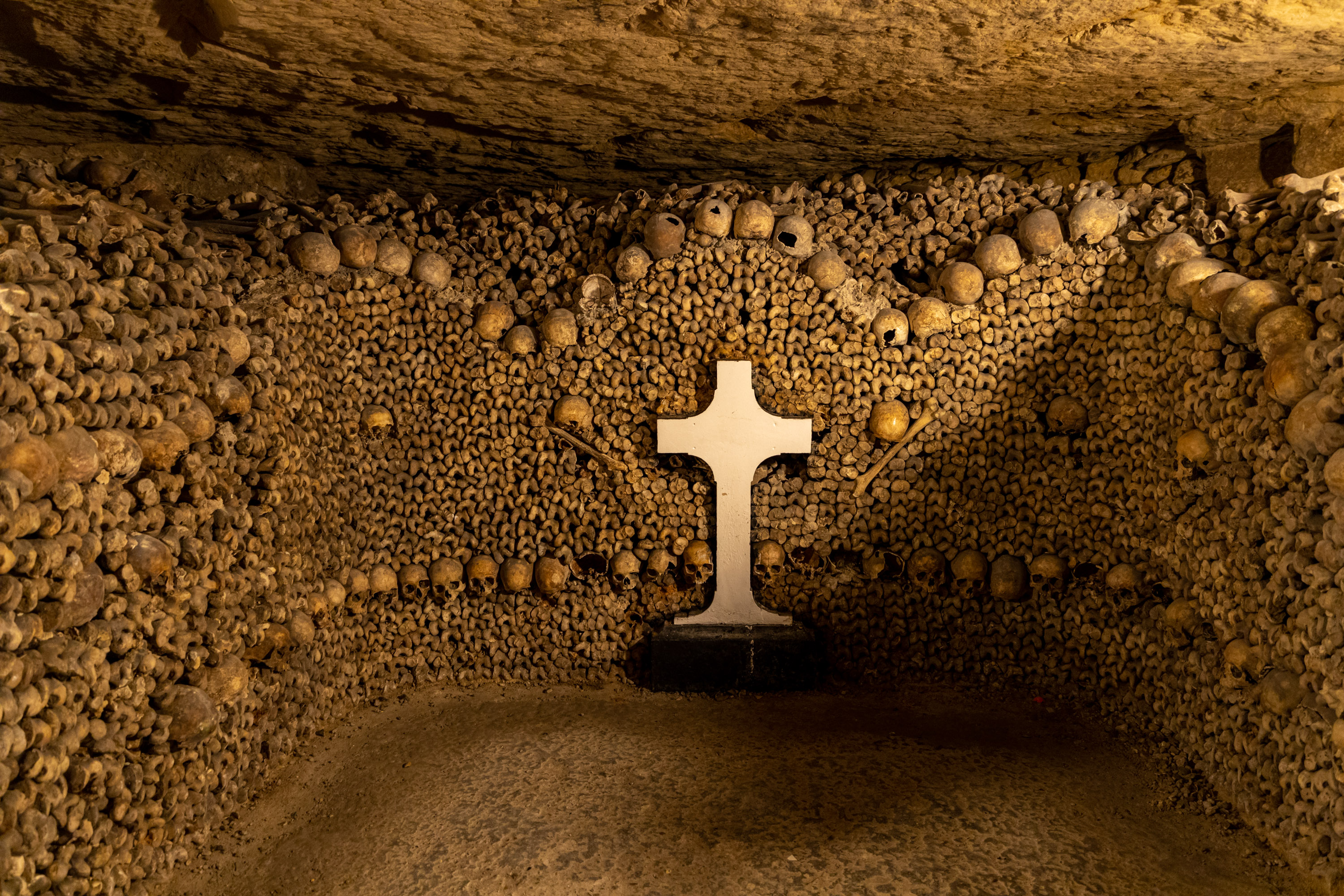The Catacombs of Paris: A Journey into the City of the Dead
Beneath the bustling streets of Paris, a hidden world awaits. A labyrinth of tunnels and chambers, stretching for miles beneath the City of Light, holds the remains of millions of Parisians. This subterranean realm, known as the Catacombs of Paris, offers a haunting glimpse into the city's past and serves as a unique memorial to those who once walked the streets above.

A Macabre Solution
In the late 18th century, Paris faced a crisis. The city's cemeteries were overflowing, creating serious health concerns for the living. A solution was needed, and it was found in the abandoned quarries beneath the city. In 1786, the process of transferring skeletal remains from the city's graveyards to these underground tunnels was begun.
For decades, bones were carefully arranged in the tunnels, creating elaborate displays that can still be seen today. Skulls and femurs were stacked in intricate patterns, forming walls and pillars that stretch into the darkness. It's estimated that the remains of six million people were relocated to this underground ossuary.
Things to do in Montrouge
A Journey Through Time
Today, a section of the Catacombs is open to the public, allowing visitors to descend into this subterranean world. The entrance is marked by a modest building in the 14th arrondissement. As one descends the narrow spiral staircase, the temperature drops and the air grows heavy with moisture.
The official tour covers only a small portion of the vast network of tunnels, but it's enough to leave a lasting impression. Visitors are guided through winding passages, their footsteps echoing off the limestone walls. Plaques along the way provide historical context and philosophical musings on mortality.
More Than Just Bones
While the skeletal remains are undoubtedly the main attraction, the Catacombs offer more than just a macabre display. The tunnels themselves are a testament to the city's geological history and the skill of the miners who carved them. Sculptures carved directly into the rock walls can be found throughout the complex, created by a quarry worker turned artist in the 18th century.
The Catacombs have also played a role in more recent history. During World War II, both the French Resistance and German soldiers used sections of the tunnels. Today, parts of the network that are closed to the public are explored by urban adventurers known as "cataphiles," despite the practice being illegal and dangerous.
A Place for Reflection
Despite its grim nature, many visitors find the Catacombs to be a surprisingly peaceful place. The cool, quiet tunnels offer a respite from the bustling city above and provide a space for contemplation. The carefully arranged bones serve as a poignant reminder of our shared humanity and the inevitability of mortality.
As one emerges from the Catacombs, blinking in the Parisian sunlight, the experience lingers. The City of Light is seen with new eyes, with an awareness of the layers of history beneath one's feet and a renewed appreciation for the fleeting nature of life.
For those seeking to further explore Paris's rich history, a visit to the Conciergerie is highly recommended. This former royal palace and prison offers another fascinating glimpse into the city's past, complementing the unique perspective provided by the Catacombs.
The Catacombs of Paris stand as a testament to the city's ability to transform even the grimmest of necessities into something profound and thought-provoking. In the heart of one of the world's most beautiful cities, this underground necropolis reminds us of the cycles of life and death that have shaped human civilization for millennia.

 Home
Home Wishlist
Wishlist